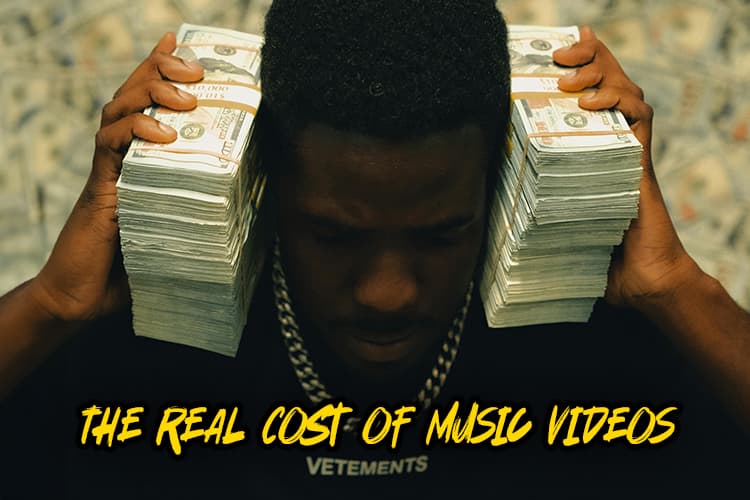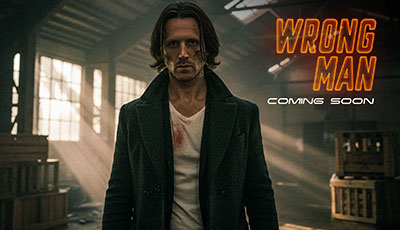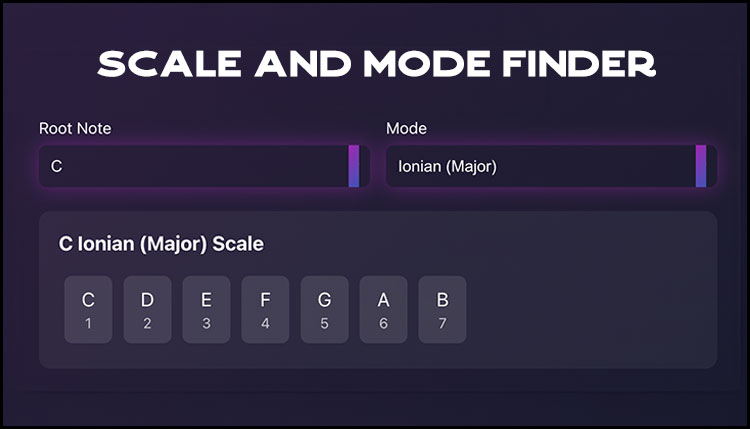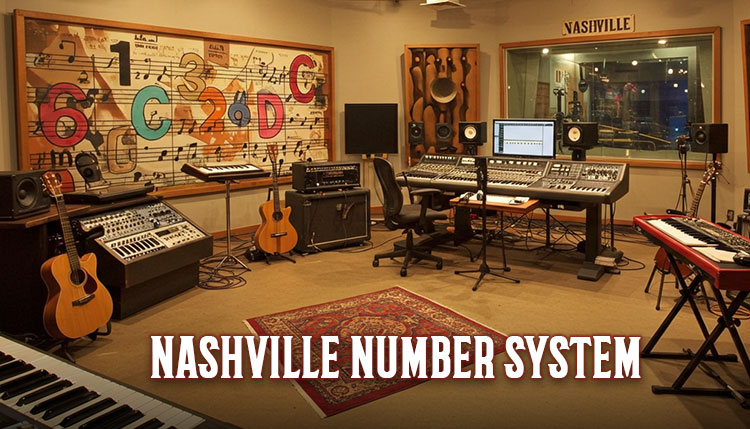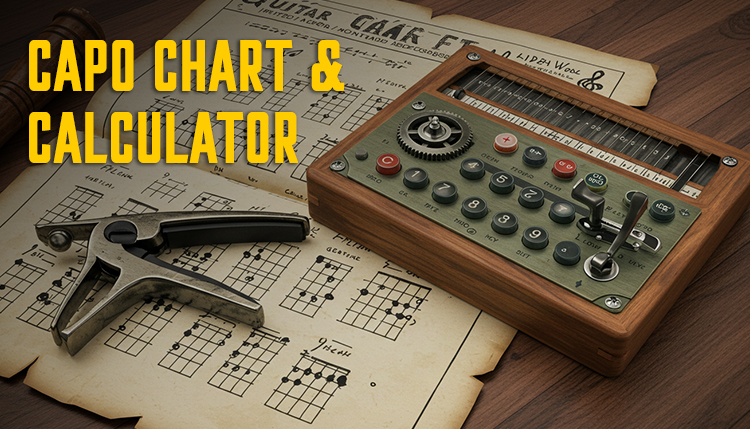The world of music videos is a dazzling realm where creativity meets commerce. But have you ever wondered, “How much does a music video actually cost?”
Well, buckle up, because we’re about to take you on a wild ride through the fascinating landscape of music video budgets!
Did you know that in 2023, the average cost of a professional music video ranged from $20,000 to $500,000? That’s quite a spread!
Whether you’re an up-and-coming artist or a curious fan, this article will break down the nitty-gritty of the cost of music videos, helping you understand where all those dollars and cents go. Let’s dive in!
How Much Does a Music Video Cost?
Let me tell you, I’ve seen it all when it comes to music video budgets.
From shoestring DIY low budget music videos ideas to big-budget extravaganzas, there’s a whole world of possibilities out there.
I remember my first attempt at a low-budget music video – boy, was that a learning experience!
DIY
So, let’s start with the DIY route. When you’re just starting out or working with limited funds, this can be a great option.
I’ve helped bands put together videos for as little as $500, believe it or not. It’s all about being creative and resourceful.
You might be using your iPhone instead of a fancy camera, and your friend’s backyard as a set, but hey – it can work!
One time, I helped a local indie band shoot a video in an abandoned warehouse. We used flashlights for lighting and edited the whole thing on a laptop.
It wasn’t perfect, but it had character, y’know?
The key is to embrace the limitations and make them part of your aesthetic.
Mid-Range
Moving up the ladder, we’ve got mid-range professional productions. This is where things start to get a bit more serious.
You’re looking at budgets anywhere from $5,000 to $50,000.
At this level, you can hire a small crew, rent some decent equipment, and maybe even book a cool location.
I once worked on a video in this range for a pop-rock band. We had a proper director, a small crew, and even a couple of days to shoot.
It was a world of difference from the DIY stuff.
We could do multiple takes, had proper lighting, and the sound quality was so much better.
Big Budget
Now, let’s talk about the big leagues – high-end, big-budget music videos.
These are the ones you see from major label artists, with budgets that can easily exceed $100,000 and sometimes run into the millions. It’s a whole different ballgame.
I haven’t personally worked on anything quite that extravagant, but I’ve been on set for a few.
It’s mind-blowing to see the scale of these productions.
Multiple locations, huge crews, celebrity cameos, insane special effects – the works.
I remember watching them film a scene with a car explosion and thinking, “Wow, that probably cost more than my entire last video!”
But here’s the thing – a bigger budget doesn’t always mean a better video.
I’ve seen million-dollar flops and $1,000 masterpieces.
It all comes down to the creativity and vision behind the project.
Now, what factors influence these costs? Well, there’s a bunch:
- The artist’s popularity and label budget
- The concept and complexity of the video
- Location and set design requirements
- Special effects and post-production needs
- Talent and crew fees
- Time constraints (rush jobs usually cost more)
- Equipment rentals
- Wardrobe and props
- Marketing and promotion costs
It’s a lot to consider, right? But don’t let it overwhelm you.
Remember, every iconic music video started with an idea and a budget – whether it was big or small.
The key is to work with what you’ve got and focus on telling your story.
One last thing – don’t forget about the hidden costs.
Things like permits, insurance, and unexpected delays can quickly eat into your budget.
I learned that the hard way on a shoot where we had to reschedule due to rain.
Always have a contingency fund!
Breaking Down the Cost of Music Videos
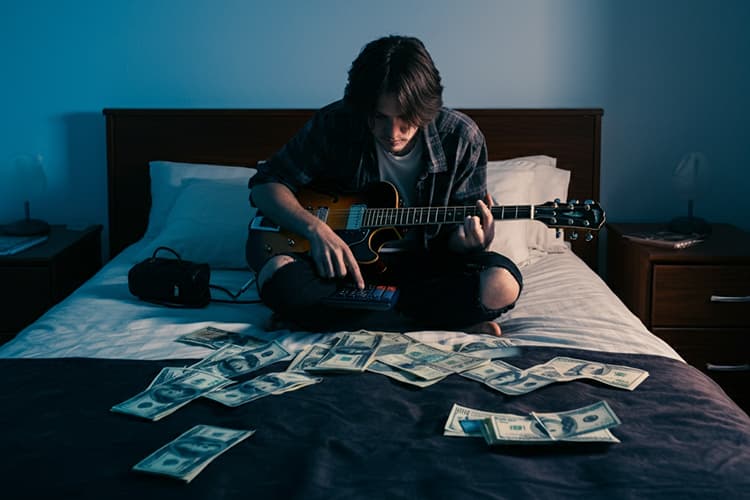
Alright, let’s dive into the nitty-gritty of music video costs.
I’ve been in this game long enough to know that understanding where your money’s going is crucial.
Trust me, I’ve made some rookie mistakes in the past that could’ve been avoided if I’d known this stuff earlier!
Preproduction
First up, we’ve got pre-production expenses. ‘
This is all the behind-the-scenes work that happens before you even pick up a camera.
Planning, scripting, storyboarding – it’s the foundation of your video.
I remember my first real music video project, I thought we could just wing it. Big mistake!
We ended up wasting so much time (and money) on set because we didn’t have a solid plan.
Now, I always make sure to budget for a good pre-production phase.
It might seem like an unnecessary expense at first, but trust me, it’ll save you in the long run.
You might spend anywhere from a few hundred to several thousand dollars here, depending on the complexity of your video.
Production
Next, let’s talk about production costs. This is where the bulk of your budget usually goes.
You’ve got equipment rentals, crew fees, and location costs to consider.
I once worked on a video where we thought we could save money by using our own cameras.
Turns out, professional-grade music video equipment makes a huge difference in quality. Lesson learned!
Here’s a quick breakdown of what you might be looking at:
- Camera equipment: $500 – $5,000 per day
- Lighting gear: $200 – $2,000 per day
- Sound equipment: $100 – $1,000 per day
- Crew fees: $200 – $1,000 per person per day
- Location fees: Can range from free to thousands per day
Of course, these are just rough estimates. The actual costs can vary wildly depending on your specific needs and location.
Post Production
Now, onto post-production. This is where the magic happens, folks!
Editing, visual effects, color grading – it’s what turns your raw footage into a polished final product.
I’ve seen so many potentially great videos fall flat because they skimped on post-production.
One time, I worked with a band who blew most of their budget on an elaborate set, leaving barely anything for editing.
The footage looked amazing, but the final cut was a mess.
Don’t make that mistake! A good editor can make even simple footage look spectacular.
Post-production costs can range from a few hundred dollars for basic editing to tens of thousands for complex music video special effects and color grading.
It’s worth investing in, believe me.
Additional Costs
Lastly, we’ve got additional costs to consider. Things like talent fees (if you’re using actors or dancers), wardrobe, and props. These can add up quick!
I once worked on a video where we had to recreate a 1950s diner. The cost of costumes and set dressing alone was more than our entire budget for previous videos!
Here’s the thing, though – sometimes these extra touches are what make a video stand out.
It’s all about finding the right balance for your project and budget.
Pro Tip: Always, always have a contingency fund. I usually recommend setting aside 10-15% of your total budget for unexpected expenses. Because trust me, something always comes up.
Whether it’s a piece of equipment breaking down or needing an extra day of shooting, you’ll be glad you have that cushion.
Remember, every dollar you spend should be contributing to your vision for the video.
It’s not about how much you spend, but how wisely you spend it.
I’ve seen amazing videos made on shoestring budgets and mediocre ones with massive funding.
At the end of the day, it’s your creativity and passion that’ll shine through.
DIY vs. Professional Costs of Music Videos
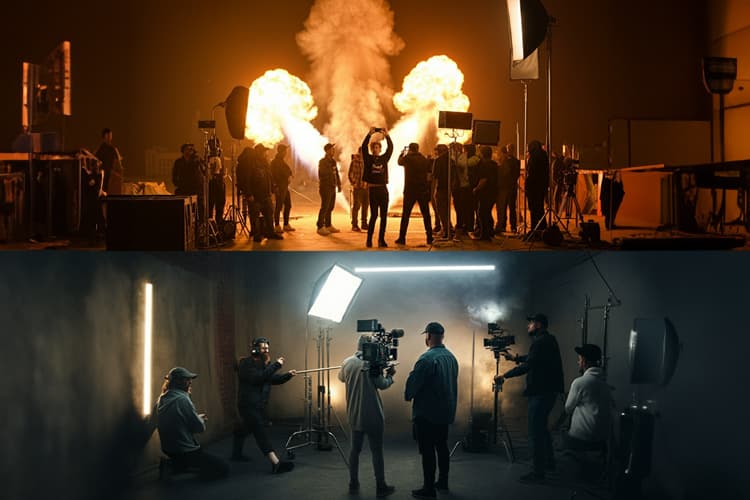
Okay, let’s talk about the age-old debate: DIY or professional?
I’ve been on both sides of this fence, and let me tell you, there’s no one-size-fits-all answer.
It really depends on your goals, budget, and the specific needs of your project.
Pros of DIY
Let’s start with the pros of DIY music videos. First off, it’s cheap. Like, really cheap.
I remember my first DIY video – we spent more on pizza for the crew than we did on equipment! It’s also a great way to learn the ropes.
You’ll get hands-on experience with every aspect of video production, which is invaluable.
Plus, there’s a certain charm to DIY videos.
They can feel more authentic and personal, which fans often appreciate.
I once worked with a folk singer who shot her entire video on an old Super 8 camera.
The grainy, nostalgic look perfectly matched her music. Sometimes, limitations can spark creativity!
But let’s be real – DIY has its downsides too. The quality often suffers, especially if you’re not experienced.
I cringe when I watch some of my early attempts now. And it can be incredibly time-consuming.
When you’re doing everything yourself, it’s easy to get bogged down in details.
Pros of Professional Productions
Now, let’s look at professional productions. The biggest pro? Quality.
A good professional team can create a polished, high-end look that’s hard to achieve on your own.
They also bring expertise and efficiency to the table.
I remember the first time I witnessed one of the top music video directors do his thing – I was amazed at how quickly and smoothly everything came together.
Professional productions also often have access to better equipment and locations.
This can really elevate your video. Plus, you get to focus on being the artist, rather than worrying about all the technical details.
The downside? Cost, obviously.
Professional videos are expensive. And sometimes, you might feel like you have less creative control.
It’s important to find a team that really gets your vision.
So, when should you invest in a professional production? Here are a few scenarios:
- You have a complex concept that requires specialized skills or equipment
- You’re releasing a single that you hope will be a breakthrough hit
- You have a significant budget from a label or crowdfunding campaign
- You want to make a statement and elevate your brand
Hybrid Approach
But here’s the thing – it doesn’t have to be all or nothing.
There are plenty of hybrid approaches that can give you the best of both worlds.
I’ve worked on several projects where we had a small professional crew but supplemented with DIY elements.
For example, I once helped a rap artist who hired a professional cinematographer but did all the location scouting and styling himself.
The result was a video that looked professional but still had a personal touch.
Another approach is to DIY your video but invest in professional post-production. Good editing and color grading can really elevate even simple footage. I’ve seen amazing transformations happen in the editing room!
Ultimately, the choice between DIY and professional (or some combination of the two) comes down to your specific situation.
Consider your budget, your skills, your timeline, and most importantly, your vision for the video.
And remember, whatever route you choose, the most important thing is that your video authentically represents you and your music.
I’ve seen technically perfect videos that fell flat because they didn’t capture the artist’s personality, and I’ve seen rough DIY videos that went viral because they were genuine and creative.
At the end of the day, your music video is about connecting with your audience.
Whether you do that with a big-budget production or a smartphone and some creativity, what matters most is that your passion and artistry shine through.
Maximizing the Cost of Music Videos
Alright, let’s get down to brass tacks. How do you squeeze every last drop of value out of your music video budget?
I’ve learned a thing or two over the years, often the hard way, and I’m gonna share some of my top tips with you.
Planning
First up, planning and preparation are your best friends. I can’t stress this enough!
I once worked on a video where we showed up on set without a clear shot list.
We wasted hours figuring out what to shoot next, and ended up going way over budget. Never again!
Here are some key planning strategies:
- Create a detailed shot list and storyboard
- Scout locations in advance
- Hold pre-production meetings with your team
- Make a day-of-shoot schedule and stick to it
Trust me, the time you spend planning will pay off tenfold during the actual shoot.
Negotiating
Next, let’s talk about negotiating with vendors and service providers.
Don’t be afraid to haggle a bit! I’ve found that many vendors are willing to cut deals, especially if you’re booking multiple days or if it’s during their slow season.
One time, I managed to get a fancy camera package at half price because we were shooting midweek when the rental house was usually quiet. It never hurts to ask!
Also, consider bartering your skills or services.
I once edited a wedding video in exchange for the use of a beautiful location for our music video shoot.
Get creative with what you can offer!
Creativity
Now, let’s get into some creative ways to cut costs without sacrificing quality.
This is where you really need to think outside the box.
Here are some ideas:
- Use natural light instead of expensive lighting setups
- Shoot in public locations that don’t require permits
- Recruit friends and fans as extras
- Repurpose existing props and wardrobe items
I remember one video where we needed a crowd scene. Instead of hiring extras, we put out a call on the band’s social media.
Fans showed up in droves, excited to be part of the video.
It saved us a ton of money and added an awesome energy to the shoot.
Online Presence
Speaking of social media, leveraging your online presence can be a game-changer.
Use your platforms to:
- Crowdfund part of your budget
- Find locations or props through your network
- Promote behind-the-scenes content to build buzz
- Host a premiere event to maximize impact
I’ve seen artists raise thousands of dollars through crowdfunding campaigns for their videos.
It’s not just about the money – it also creates a sense of investment from your fans.
Here’s another tip: multi-purpose your shoot.
If you’re already paying for a location and crew, why not shoot content for multiple videos or even press photos while you’re at it?
I once worked with a band that shot three music videos and a whole album’s worth of promo pics in one marathon weekend. It was exhausting, but so cost-effective.
Post Production
Don’t forget about post-production efficiencies either.
Look for editors who offer package deals, or consider purchasing video editing software and learning to do some of the work yourself.
I taught myself basic color grading, and it’s saved me thousands over the years.
Emerging Technologies
Lastly, always keep an eye out for emerging technologies that might make production cheaper or easier.
When drone cameras first became accessible, it opened up a whole new world of affordable aerial shots that used to cost a fortune.
Remember, a tight budget doesn’t have to mean a subpar video.
Some of the most iconic music videos of all time were made on shoestring budgets. It’s all about creativity, planning, and making the most of what you have.
And here’s my final piece of advice: don’t be afraid to ask for help or advice.
The music community can be incredibly supportive.
Reach out to other artists or industry pros – you’d be surprised how many people are willing to share their knowledge or lend a hand.
Now go out there and make some magic happen!
The Real Cost of Music Videos: Case Studies

Alright, let’s get into some real-world examples.
I’ve been lucky enough to work on or closely observe a wide range of music video projects, and I think sharing these experiences can give you a better idea of what’s possible at different budget levels.
Low Budgets
Let’s start with some low-budget success stories.
One of my favorites is a video I helped with for an indie folk band. They had a budget of just $1,500, but man, did they make it work!
Here’s how we broke it down:
- $500 for camera rental (we borrowed lights from a friend)
- $300 for location fees (we found a beautiful old house on Airbnb)
- $200 for props and costumes (mostly thrift store finds)
- $500 for editing (we found a film student who did an amazing job)
The result? A haunting, atmospheric video that perfectly matched the song’s vibe.
It ended up getting picked up by several indie music blogs and really helped boost the band’s profile.
Another low-budget win was a hip-hop video a friend worked on. The artist had only $1,000 to work with, so they got creative.
They shot the entire thing guerrilla-style around the city, using a DSLR and natural light.
The artist called in favors from friends who owned cool cars for a few scenes.
The raw, street-level energy of the video actually worked perfectly for the track.
Mid-Range Budgets
Moving up to mid-range productions, I worked on a pop video with a budget of $15,000.
This allowed for a much more polished production.
We were able to rent a proper sound stage, hire a small but professional crew, and invest in some cool practical effects.
The budget breakdown looked something like this:
- $3,000 for pre-production (storyboarding, location scouting, etc.)
- $5,000 for the shoot day (including equipment rental and crew fees)
- $2,000 for talent (we hired two professional dancers)
- $4,000 for post-production (editing, color grading, and some minor VFX)
- $1,000 for miscellaneous expenses
The resulting video had a really slick, professional look that competed with major label releases.
It racked up over a million views on YouTube and played a big part in the artist signing a record deal.
High End Budgets
Now, let’s talk high-end. While I haven’t personally directed any massive budget videos, I’ve been on set for a few, and let me tell you, it’s a whole different world.
I once observed the making of a video for a major pop star with a budget rumored to be around $500,000. It was mind-blowing.
Multiple shoot days, a huge crew, elaborate sets, high-end special effects, celebrity cameos – the works.
While I’m not sure of the exact breakdown for the music video I can imagine everyone involved was paid very well and no expense was spared.
If you ever get to this level, you made it to the big time!
Conclusion
And cut! We’ve taken you on a whirlwind tour of music video costs, from shoestring budgets to blockbuster productions.
Remember, the perfect music video doesn’t always need a Hollywood budget – it’s about creativity, planning, and making smart choices.
Whether you’re an artist ready to bring your vision to life or a fan with a newfound appreciation for what goes into these mini-movies, we hope this guide has shed some light on the complex world of music video production costs.
So, are you ready to start planning your next visual masterpiece? The stage is set, and the spotlight’s on you!

